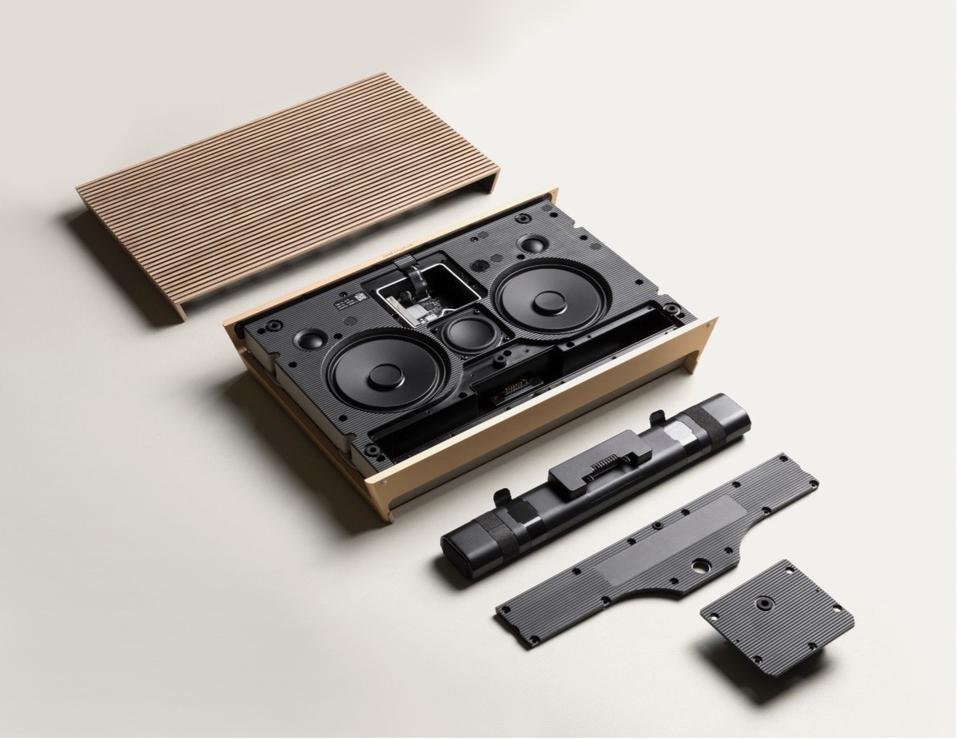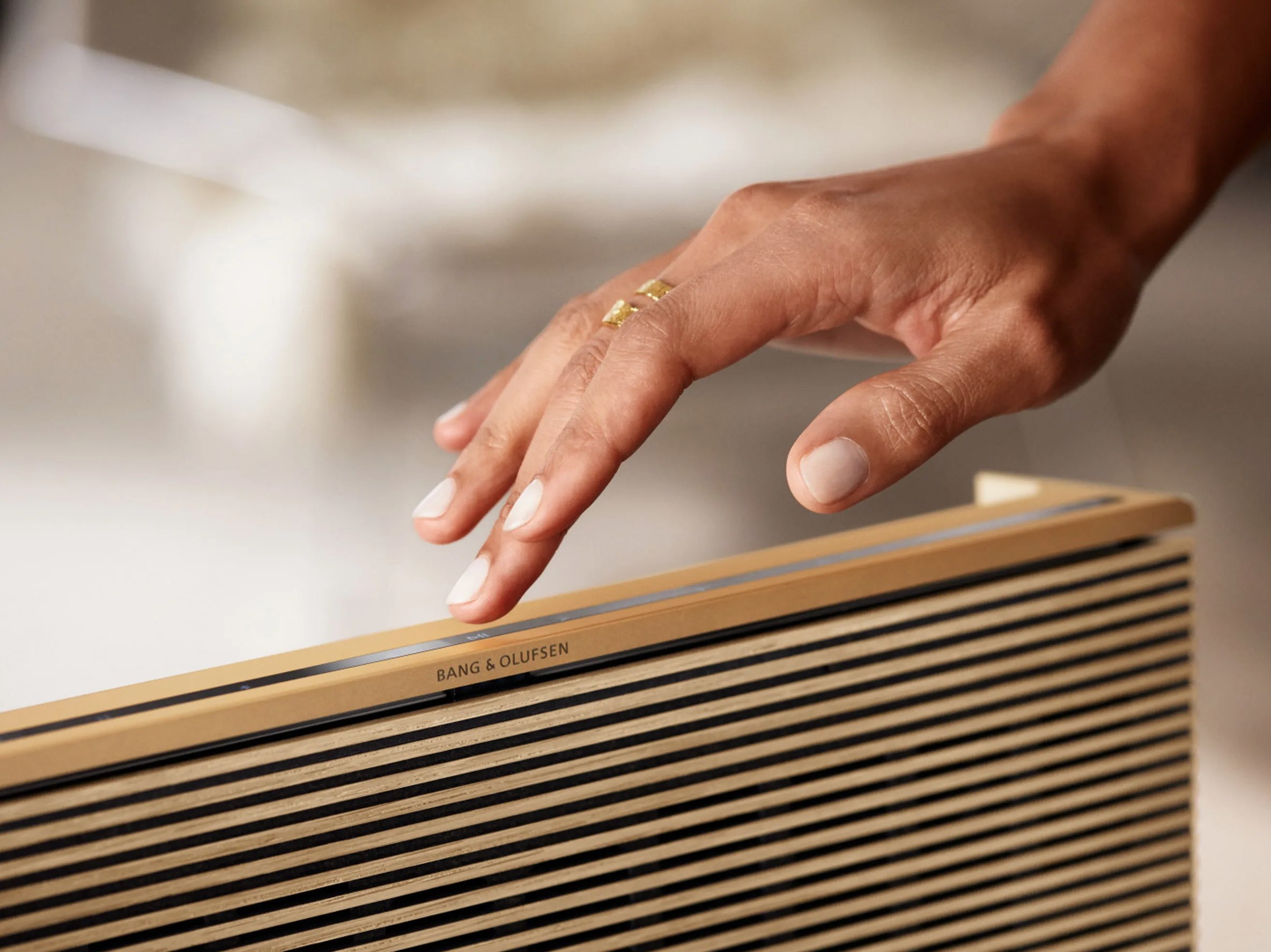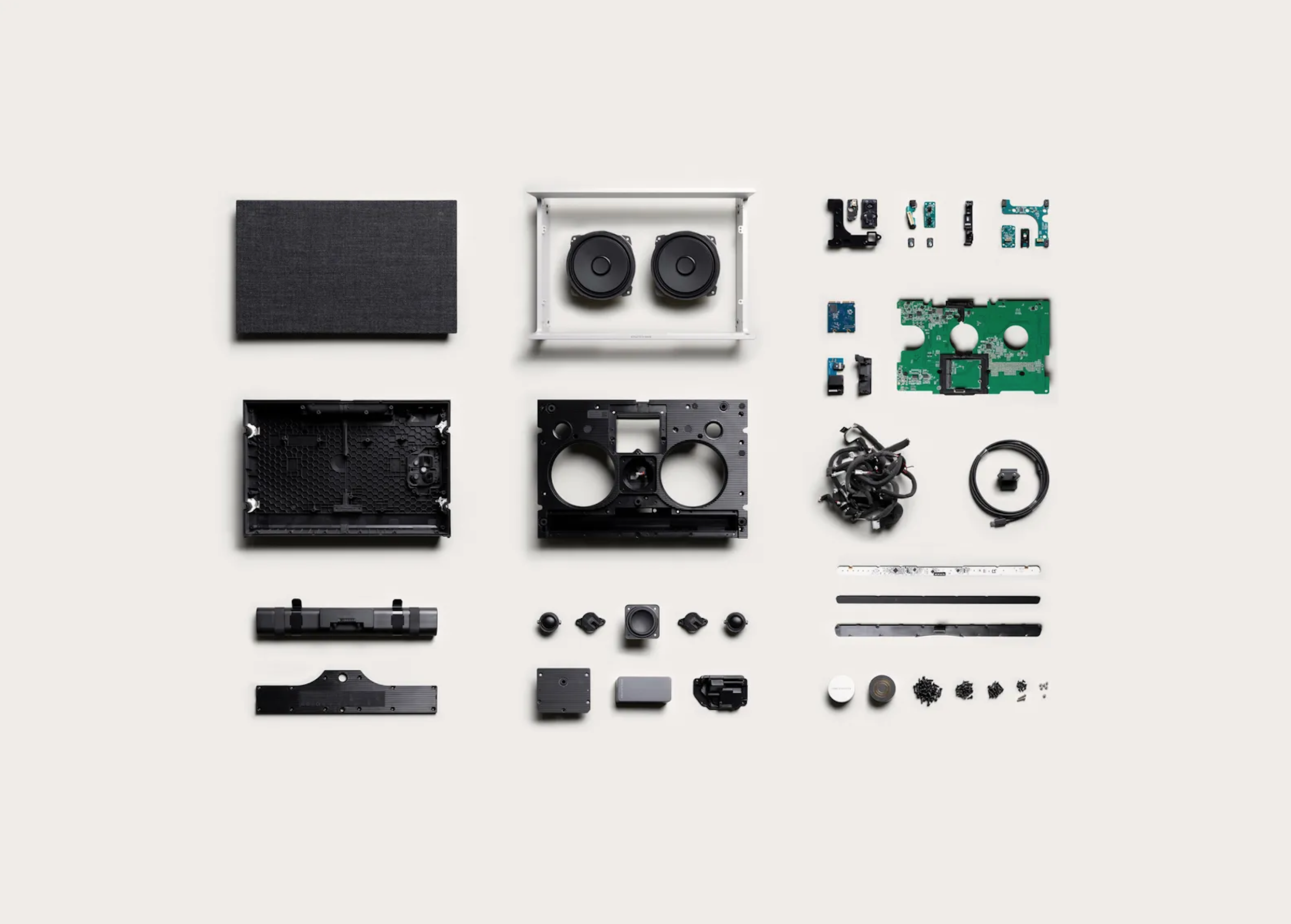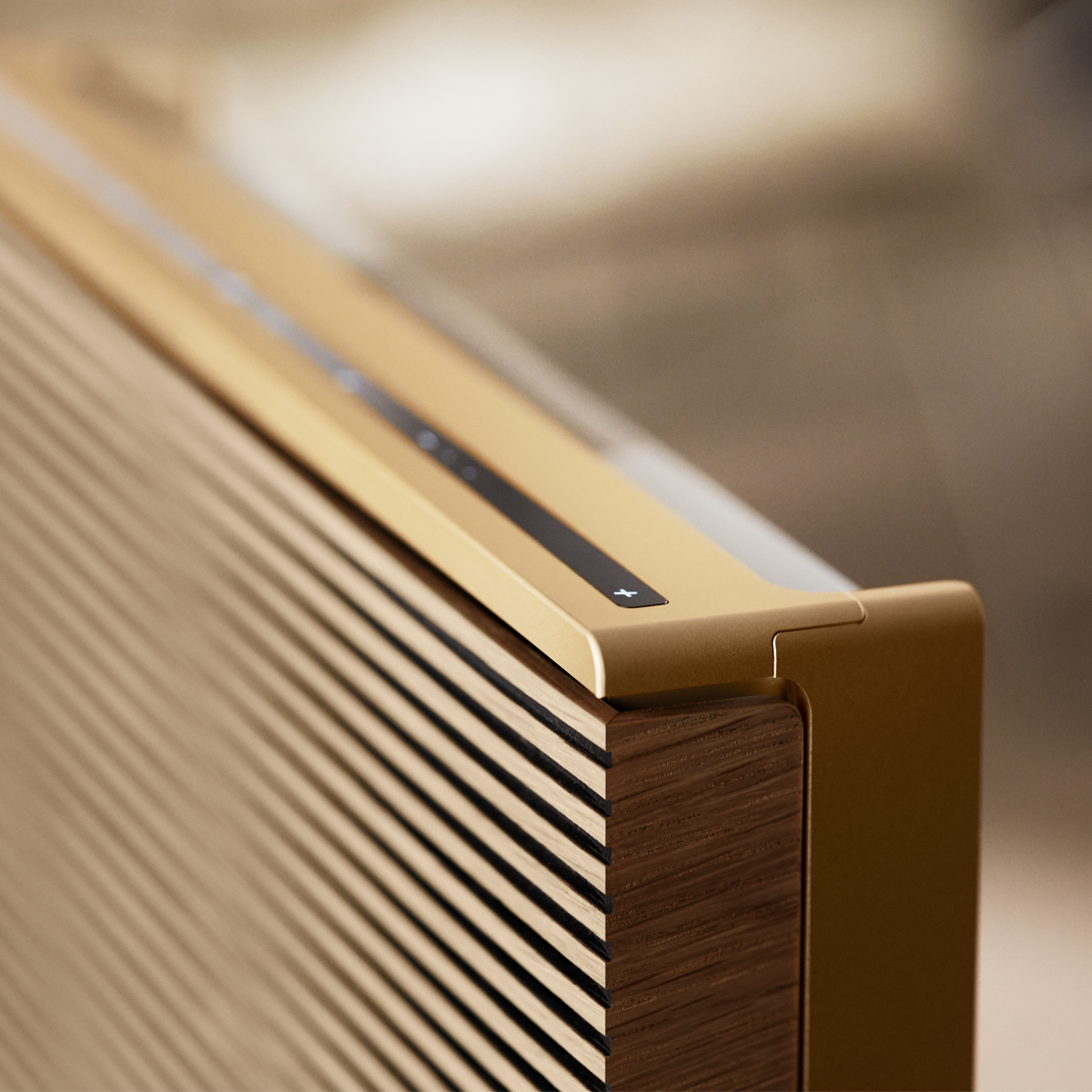Bang & Olufsen
Consumer centric enabling sustainable change.
How is it an example of design for reuse and repair?
Bang & Olufsen’s recent product launch of Beosound Level, shows design thinking with modularity as a centric design method. the speaker is designed to be used by more than one generation. The product aims to achieve this through being designed to adaptive; for different interior styles, designed for being repaired and reassembled.
The method of designing for replacement of batteries, changeable fabric and wood covers, is achieved through a modular design. Alongside modularity, material selection was a key factor for the products minimal environmental impact. Utilising post consumer waste stream, 60% of the plastic content is derived PCW.
As all components need to work together to achieve the ease of repair and re-assemble modularity is key, which opens up more sustainable design methodologies, such as longevity. It’s a great example of designing with the consumer centric to being the enabler of sustainable change.



